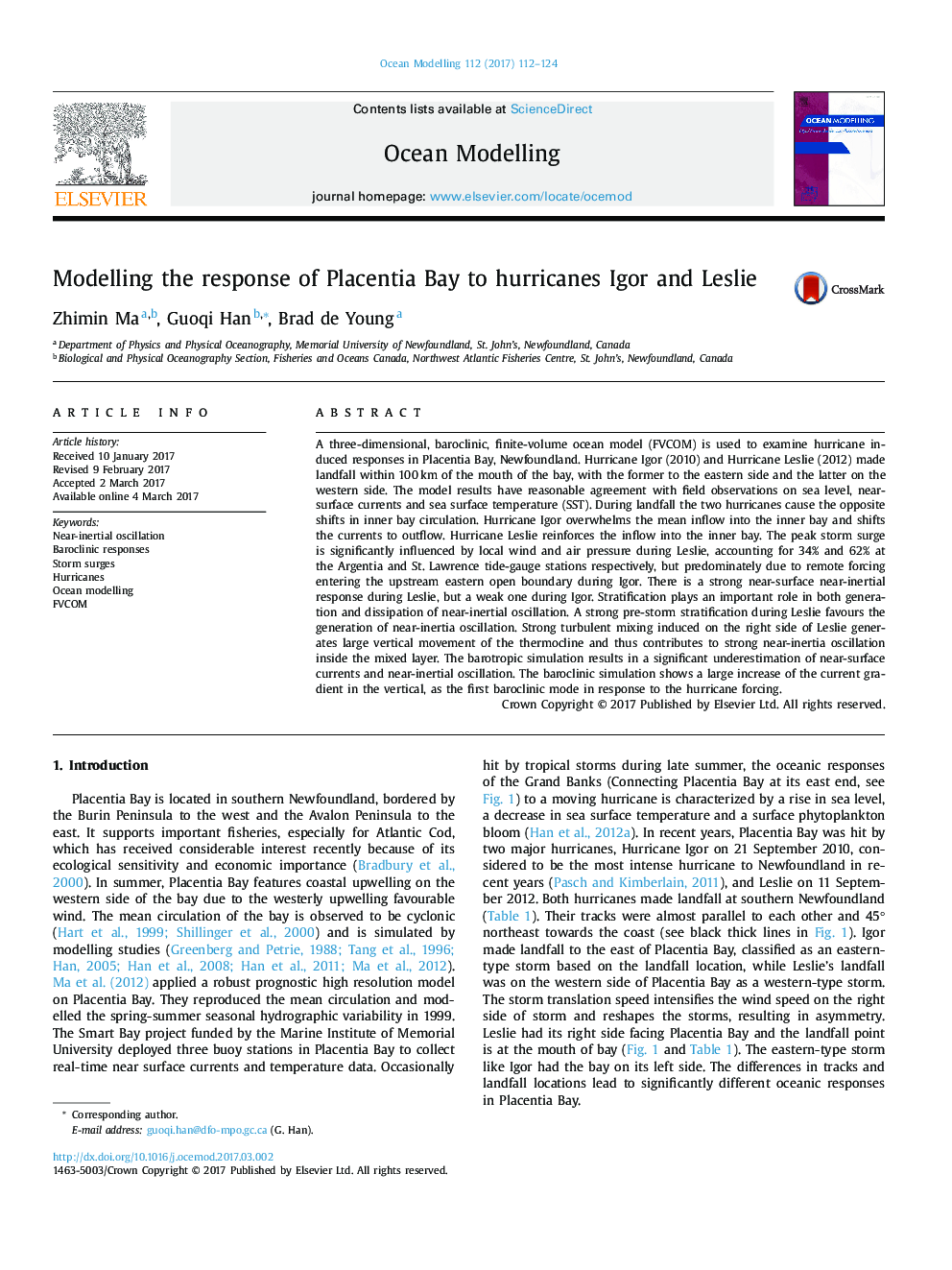| کد مقاله | کد نشریه | سال انتشار | مقاله انگلیسی | نسخه تمام متن |
|---|---|---|---|---|
| 5766373 | 1627737 | 2017 | 13 صفحه PDF | دانلود رایگان |

- Model simulated well the storm surge in Placentia Bay during Igor and Leslie.
- Local atmospheric forcing was important in the storm surge by Leslie, but not by Igor.
- Igor and Leslie caused highly different circulation changes in Placentia Bay.
- Baroclinic effect significantly enhanced storm-induced inertial oscillation.
A three-dimensional, baroclinic, finite-volume ocean model (FVCOM) is used to examine hurricane induced responses in Placentia Bay, Newfoundland. Hurricane Igor (2010) and Hurricane Leslie (2012) made landfall within 100Â km of the mouth of the bay, with the former to the eastern side and the latter on the western side. The model results have reasonable agreement with field observations on sea level, near-surface currents and sea surface temperature (SST). During landfall the two hurricanes cause the opposite shifts in inner bay circulation. Hurricane Igor overwhelms the mean inflow into the inner bay and shifts the currents to outflow. Hurricane Leslie reinforces the inflow into the inner bay. The peak storm surge is significantly influenced by local wind and air pressure during Leslie, accounting for 34% and 62% at the Argentia and St. Lawrence tide-gauge stations respectively, but predominately due to remote forcing entering the upstream eastern open boundary during Igor. There is a strong near-surface near-inertial response during Leslie, but a weak one during Igor. Stratification plays an important role in both generation and dissipation of near-inertial oscillation. A strong pre-storm stratification during Leslie favours the generation of near-inertia oscillation. Strong turbulent mixing induced on the right side of Leslie generates large vertical movement of the thermocline and thus contributes to strong near-inertia oscillation inside the mixed layer. The barotropic simulation results in a significant underestimation of near-surface currents and near-inertial oscillation. The baroclinic simulation shows a large increase of the current gradient in the vertical, as the first baroclinic mode in response to the hurricane forcing.
Journal: Ocean Modelling - Volume 112, April 2017, Pages 112-124